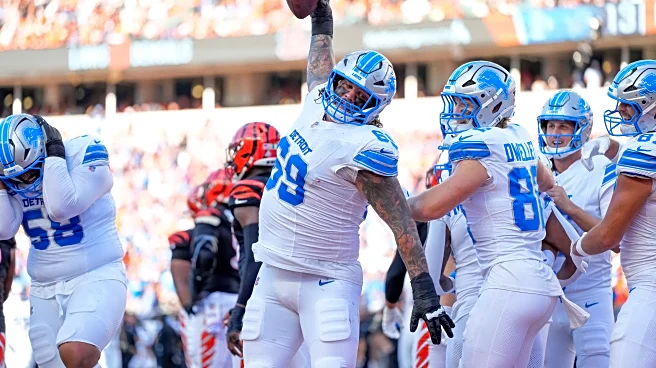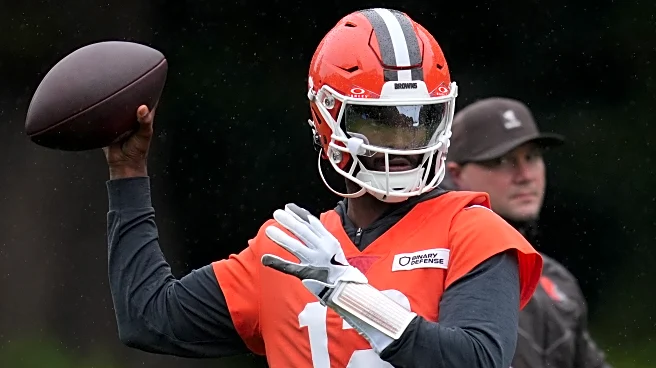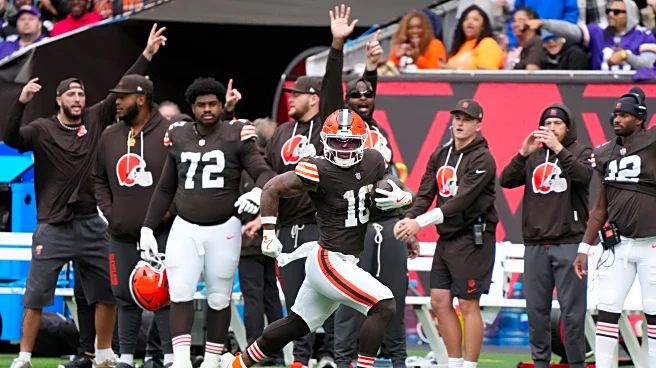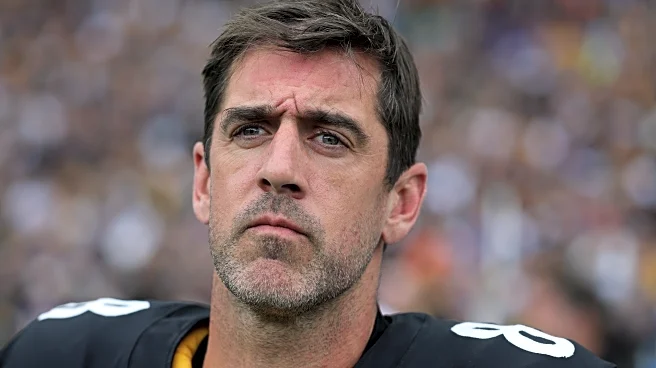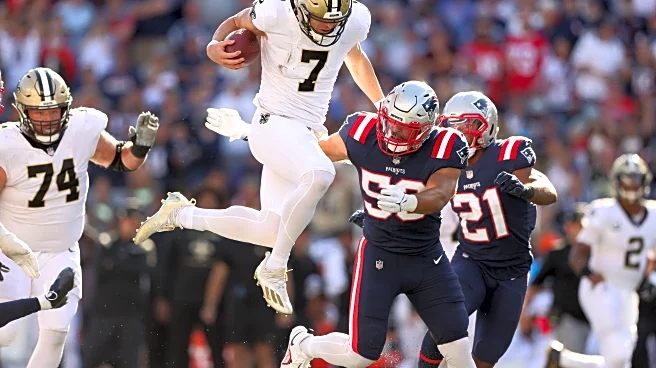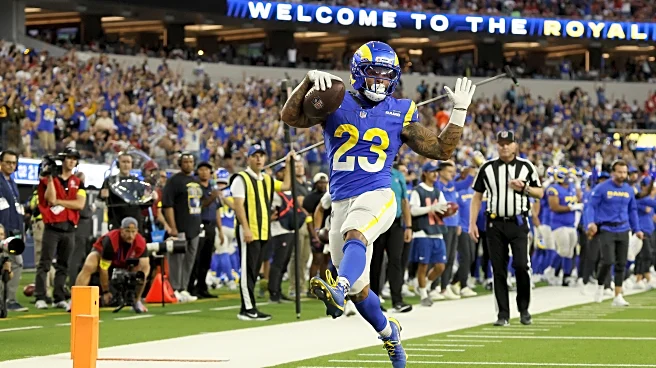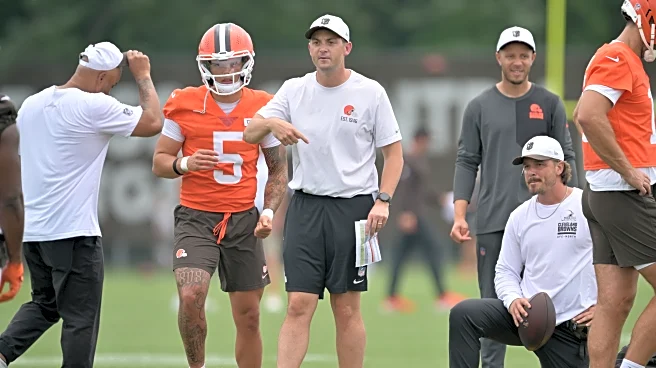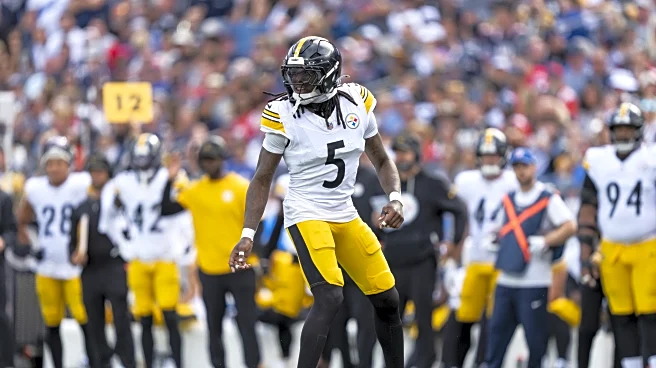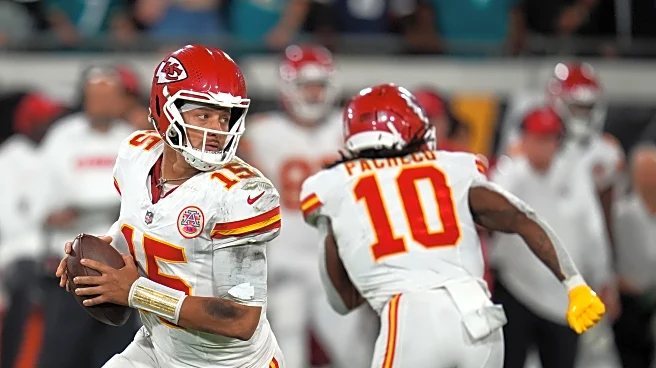The 3-1 Steelers and 1-4 Browns meet this Sunday in Pittsburgh. On paper, it’s a game that looks like a great opportunity for the black and gold to continue to grow their lead over the rest of the AFC North, but it’s still a rivalry game where anything can happen.
The Browns have made some changes on offense and still field one of the league’s best defenses. What should fans expect from Cleveland as Pittsburgh opens divisional play?
What to expect from the Browns’ offense

Rushing YPG: 95.8 (26th)
Passing YPG: 192.4 (24th)
PPG: 14.6 (31st)
RB: You can read the stats above – the Browns offense hasn’t been that good in 2025. Through five weeks this season, the most points they’ve scored in a game has been 17. They haven’t been able to get going, even against underperforming defenses such as the Ravens and Bengals.
However, the Browns made a quarterback switch last week, swapping out the veteran Joe Flacco (now a Bengal) for third-round rookie Dillon Gabriel in the starting lineup. And rookie running back Quinshon Judkins, who missed the season opener (and the summer) following a domestic violence and battery charge that was later dropped, has slowly gained a bigger role in the offense. He had a career-high 23 carries last week in a 21-17 loss to the Vikings.
That’s to say, while the season’s results so far have the Browns offense among the worst in the league, this is a group that’s still evolving.
However, Gabriel’s play against the Vikings didn’t exactly scream “franchise savior” even if it was just one game against one of the league’s more complicated defenses. He completed 57.6% of his passes for 190 yards, two touchdowns, and no interceptions.
The Browns’ plan for Gabriel was about what you’d expect for a rookie quarterback in his first game, with a heavy dose of designed rollouts to cut the field in half.
Gabriel’s mobility is another asset. He’s nowhere near the athlete of the NFL’s better running quarterbacks, but he’s an upgrade over Flacco. Gabriel had some nice throws on the run and an eight-yard scramble against Minnesota. However, there was also a read-option play where he kept the ball and didn’t have the twitch to get past an NFL edge defender.
As a passer, Gabriel didn’t push the ball deep, instead focusing on short throws near the middle of the field, largely by targeting tight ends and through screen passes.
(Pass chart via Next Gen Stats):

Gabriel had a few misses but did toss this great tight-window touchdown to David Njoku to take the lead in the third quarter:
As you can probably guess, tight ends are the heartbeat of the Cleveland passing game. David Njoku (20) and rookie Harold Fannin Jr. (21) are the team’s top two reception leaders through five games. Expect a lot of 12 personnel on Sunday.
Njoku, as Steeler fans already know, is a physical freak who will need to be a coverage priority this week.
Fannin, who put up video game numbers in 2024 with Bowling Green, has also developed into a strong receiving weapon for Cleveland. He’s also used a lot as a “move” blocker in the Browns’ run game, seeing a lot of work as fullback or running across the formation.
In such a tight end-heavy offense, the receivers have taken more of a backseat. Jerry Jeudy and Cedric Tillman have had their moments but aren’t a particularly worrisome duo. Rookie Isaiah Bond has taken over as the main slot receiver but has just nine grabs on the year.
But when the Browns’ passing game works, it’s because the run game set it up. Like the Steelers in Week 4, the Browns were able to get their ground attack going against the Vikings, using lots of heavy personnel and rushing for 140 yards.
Judkins was the catalyst. He had 110 yards on the ground with a 4.8 average. He looked like the best version of his Ohio State self, with good acceleration and decisiveness behind the line of scrimmage and a tough, downhill running style. He’s not the most elusive or fast running back, but if he gets a full head of steam he’s tough to bring down and capable of chunk gains.
He’s been a lot of fun to watch, and has already earned plenty of praise from Steelers head coach Mike Tomlin.
Behind Judkins, the Browns have two capable backs in Jerome Ford and Dylan Sampson. Ford largely handles passing down duties such as pass protection.
The Browns’ offensive line hasn’t been quite as impressive this season. Per NFL Pro, Cleveland is the worst team in the league when it comes to rushing yards before contact, averaging a brutal -0.05 per carry. They also have the fourth-highest pressure rate allowed in the NFL (39.8%).
Those aren’t completely O-line stats, but they match the eye test. While the Browns’ front had some good moments on Sunday, they gave up a lot of quick pressures and often looked confused by blitzes and stunts. They also racked up penalties against the Vikings, including a holding call that erased a long Judkins touchdown run.
Left tackle K.T. Leveston has given up three sacks so far this year and will have a tough matchup against (likely) Alex Highsmith and Nick Herbig on Sunday.
As you can probably guess, beating the Browns’ offense comes down to controlling the line of scrimmage. Stop the run game, pressure the rookie quarterback making his second career NFL start, and you have a good chance at success.
The other important key will be shutting down the tight end passing game of Njoku and Fannin, which will be a good challenge for a Steeler middle linebacker duo that hasn’t been great in coverage this season.
Still, the Steelers have more front seven talent than the Vikings and have what it takes to hold the Browns to under 20 points for yet another game. Coming off the bye and with Alex Highsmith expected back in the lineup, Steeler fans should feel good about this matchup.
What to expect from the Browns’ defense

Rushing YPG Allowed: 75.6 (1st)
Passing YPG Allowed: 172.2 (T-4th)
PPG Allowed: 24.6 (21st)
RP: Browns defensive coordinator Jim Schwartz is in the middle of his third year on the job for Cleveland, which means the Steelers are intimately familiar with what they are up against.
For the less initiated, the Schwartz defense essentially boils down like this:
- Relying on the front four to create pressure with creative stunts, and simulated pressures created by bringing linebackers and/or defensive backs to the line of scrimmage and then dropping them into coverage. As a result, the Browns are middle of the pack when it comes to blitz rate (26.7%, 14th) and currently hold the lowest such rate since Schwartz joined the team in 2023.
- A heavy dose of Cover 1 man, and Cover 3 when using zone. The Browns are in these coverage concepts 62% of the time in 2025.
- Fast and agile linebackers capable of dropping into coverage effectively when starting near the line of scrimmage, as well as being dangerous blitzers when Schwartz does send extra rushers.
As you can see in the play above, the Browns are able to generate pressure without blitzing or even running any stunts or twists. A lot of times, Schwartz trusts that his front is just better than the opposing offensive line, and they’ll be able to get pressure with only four. He might drop down a linebacker (our old friend Devin Bush in the play above) and/or a safety (Grant Delpit here) to make the offense have to think about where pressure might be coming from, but once the ball is snapped, those players drop into coverage. And the annoying thing is, a lot of times, his defensive line IS better. On this play, rookie defensive tackle Mason Graham beats his man to create the pressure, even with star player Myles Garrett on the sideline for this rep.
Of course, I don’t need to remind any of you about Garrett. There’s a reason we’re constantly arguing with Browns fans about whose better between him and T.J. Watt. As much as we might hate it — and I’d still take Watt every day that ends in “Y” — Garrett is one of the best players of his generation.
Here’s an example of Schwartz deploying Garrett on a stunt to terrorize Joe Burrow and the Bengals in Week 1.
Garrett is the star of the Browns’ frontline, but a talented supporting cast surrounds him. The aforementioned rookie Graham provides pass rush from the middle of the line, and has played between 74-81% of the snaps each week so far. Joining the rookie in the middle are 11-year vet Shelby Harris and 10-year vet Maliek Collins, who bring run-stuffing chops and 61.5 sacks between them.
The Browns rotate in a mix of five other players to keep the line fresh, with Isaiah McGuire (164 snaps) and Alex Wright (118) leading that charge, and guys like Adin Huntington (65), Cameron Thomas (56), and former first-rounder Joe Tryon-Shoyinka (22) adding extra depth. That group has a combined 26.5 career sacks among them, but just four so far this season.
Of course, what allows Schwartz to blitz relatively infrequently by NFL standards is the stellar coverage skills of the Browns’ secondary. The foundation of Schwartz’ scheme is getting pressure with four rushers, and smothering offenses with man coverage that forces the quarterback to hold onto the ball longer. That doesn’t mean playing exclusively man — no NFL team plays EXCLUSIVELY in any one coverage — but they do lead the league in Cover-1 Man rate. Naturally, they run a lot of Cover-3 as well, as it can look similar to Cover-1 man pre-snap, and is a coverage that can provide support in run defense.
Denzel Ward is Cleveland’s best cornerback and is among the league’s most underrated players. Ward has his slip-ups every now and then — every corner does — but he’d be a much bigger star if he were playing for a team that wins more consistently than the Browns do.
Ward’s sticky coverage and ability to change directions fluidly is just as important to the Browns’ defensive recipe as Garrett’s pass rush. Even when a receiver seemingly has him beat, Ward’s got unnatural closing speed and a knack for getting his hands on the ball. The Steelers receivers will need to be sharp on Sunday, and can’t afford to get lazy or miss a detail in their routes.
Until this week, Ward’s running mate was Greg Newsome, but the Browns shook things up this week by sending him to Jacksonville in exchange for Tyson Campbell. Newsome was a good player in his own right, but Cleveland likely saw the writing on the wall that he’d require an extension paying him roughly $20 million a year after this season. Campbell, a good man coverage corner in his own right, signed an extension under the old regime in Jacksonville a year ago, but the contract is backloaded and won’t balloon until after the 2026 season.
Early indications are that Campbell will try to suit up this weekend for the Browns. In the event that he doesn’t, just file this away for the Steelers’ second meeting with Cleveland later this year.
At nickel, the Browns have increasingly deployed a corner BTSC readers who follow my draft gem series might remember: second-year corner Myles Harden. After seeing only 19 snaps in Week 1, the Browns have started using Harden more and more each week, with him now averaging roughly 40 snaps (or 60ish%) a week. He’s a solid run defender, but is likely the weak spot the Steelers should target this week, as he is allowing +3.2 EPA per target and a QB rating of 111.1.
Safeties Grant Delpit and Ronnie Hickman Jr. round out the Browns’ secondary. Both are plus defenders in coverage and can tackle well.
At linebacker, the Browns possess a lot of speed. Steelers fans are familiar with Bush — who has not lived up to his first round billing but has seemed to turn into a decent player in Cleveland — but this offseason they added rookie Carson Schwesinger and Jerome Baker as well. Baker went to college at Ohio State, but is mostly limited to their 4-3 base looks. Instead, it’s the rookie out of UCLA who is the new star in Cleveland, and the linebacker they leave on the field in their subpackages. Through five weeks, he’s already generating DROY buzz.
So how do the Steelers beat the Browns? For starters, I’d expect to see more of the jumbo packages featuring six offensive linemen and Darnell Washington. Schwesinger and Bush are each roughly 240 pounds and Baker hovers around 230 pounds. Delpit, who often plays near the line, is 208 pounds. Beefing things up front should work against Cleveland.
The Browns’ run defense is ranked highly, but I’m skeptical of their early high ranking. So far, they’ve faced off against the Bengals (32nd in rushing), Ravens (17th), Packers (18th), Lions (7th) and Vikings (23rd). Each of those teams, save Detroit, is in the bottom half of the league in rushing. And while the Browns managed to bottle up the Lions’ David Montgomery, Jahmyr Gibbs averaged 6.1 YPC.
Additionally, running a creative, quick passing attack like the Steelers have been using is one way to exploit Cleveland’s man tendencies, while also neutralizing some of Garrett’s effectiveness.
That should include concepts featuring the Steelers’ pass-catching running backs. Here was an effective play Green Bay ran against the Browns, just by motioning running back Josh Jacobs and putting a tight end out wide.
Cleveland’s defense is a tough challenge, but the Steelers should hopefully have enough firepower and wits about them with the combined experience of Aaron Rodgers and playcaller Arthur Smith to get the Steelers to 4-1.


